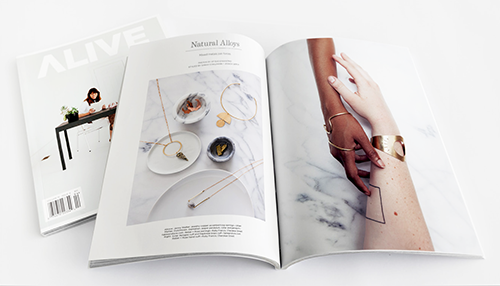 Lifestyle-based print — especially in the luxury space — is hot, attracting both advertisers and readers willing to pay higher prices.
Lifestyle-based print — especially in the luxury space — is hot, attracting both advertisers and readers willing to pay higher prices.
Look out, Midwest markets; there’s a new player on your doorstop in the regional magazine niche and it’s looking to go nationwide.
“In March, ALIVE Media Group announced the bold step of reinvesting in its print product, reducing frequency but increasing quality, converting to a bookazine format and instituting a paid subscription model. Now, the company is doubling down on that investment, revealing plans to expand distribution beyond Missouri to seven additional markets throughout the Midwest,” writes Greg Dool in Folio:.
“According to ALIVE co-founder and publisher Elizabeth Tucker, the move is an affirmation of the print rebrand and the enduring vitality of a high-quality regional magazine that can serve its community with integrity,” Dool continues.
This announcement seems to come almost as an answer to the news last month that Emmis Communications is selling off their regional print assets due to investor skittishness in media brands. While Wall Street may be bearish on the idea of print magazines, the consumer audience says otherwise.
“According to Tucker, not only has the ALIVE’s overall audience — including an influx of print subscribers — doubled since last year, but ad rates have increased 30 percent, indicating that advertisers are just as willing to pay for the higher quality print product as readers,” Dool notes.
This is the key takeaway for brands to understand in this evolving market. Lifestyle-based print — especially in the luxury space — is hot, attracting both advertisers and readers willing to pay higher prices.
Part of any successful expansion is opening the right doors, and ALIVE is no exception: To meet the challenge, they enlisted key influencers in their new markets to ease access.
“We started the expansion six months ago by launching stories in select markets that are tied to important influencers,” Tucker continues. “We look forward to expanding our relationships with key influencers in each market, meeting new and interesting artists and makers, learning about the entrepreneurs and small businesses that make each community tick and telling the stories of art, culture, style, and civic progress.”
What’s next for the brand?
“Eventually,” said Tucker, “We’d like to be in every major market across the U.S., providing a perspective from the middle of America.”
Regional magazines have been a bright spot in the industry throughout much of the recent downturn, and this expansion is proof positive that the regional niche is strong.
